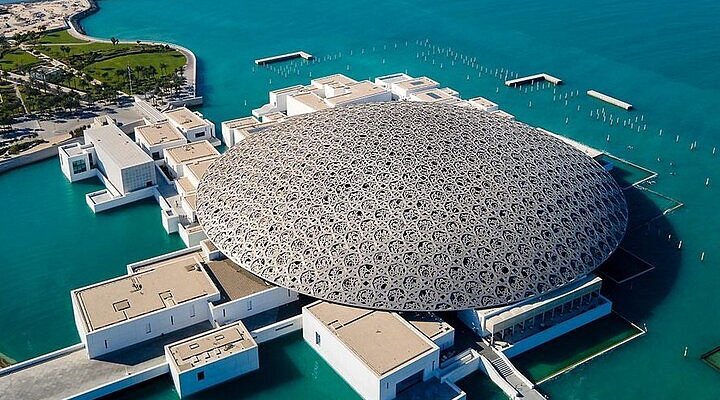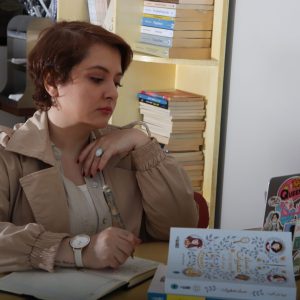Louvre Abu Dhabi is not just a museum; it is a global cultural landmark that tells the story of humanity through art, history, and architecture. Located in the heart of Saadiyat Island in Abu Dhabi, the museum brings together artworks and artifacts from across the world, transcending borders and time periods. Since its opening in November 2017, Louvre Abu Dhabi has become a symbol of cultural exchange, bridging the gap between East and West.
In this article, we explore the history, design, collections, exhibitions, and cultural significance of this extraordinary museum. We will also look at why it has become a must-visit destination for travelers, students, and art lovers worldwide.
The Birth of Louvre Abu Dhabi
The idea of Louvre Abu Dhabi was born from a unique cultural collaboration between the United Arab Emirates (UAE) and France. In 2007, the two countries signed a historic agreement that allowed Abu Dhabi to use the name “Louvre” for 30 years. This deal also gave the museum access to art loans from French museums such as the Musée du Louvre, Musée d’Orsay, and Centre Pompidou.

This partnership symbolized a new era of cultural diplomacy. For the UAE, it was an opportunity to create a world-class museum that would strengthen its position as a global hub for art and culture. For France, it was a chance to extend its cultural influence beyond Europe and share its treasures with a wider audience.
After a decade of planning and construction, Louvre Abu Dhabi officially opened its doors on November 11, 2017. The inauguration was attended by world leaders, dignitaries, and cultural icons, marking a significant moment in global cultural history.

The Architectural Masterpiece
One of the most striking features of Louvre Abu Dhabi is its architecture. Designed by the world-renowned French architect Jean Nouvel, the museum is itself a work of art.
The Dome: A Floating Marvel
The most iconic part of the museum is its massive dome, which appears to float above the complex. Made of steel and aluminum, the dome spans 180 meters in diameter and weighs around 7,500 tons. Despite its heavy structure, it looks light and delicate thanks to its geometric design.
The dome is made up of 8,000 unique metal stars arranged in a complex pattern. As sunlight filters through the gaps, it creates a magical effect known as the “rain of light.” This natural light display gives visitors a sense of walking under a starry sky.
The Island Setting
Louvre Abu Dhabi is built on the waterfront of Saadiyat Island, giving it a serene and open atmosphere. Surrounded by the waters of the Arabian Gulf, the museum complex looks like a floating city of art. Visitors often describe it as a place where land, sea, and sky meet art and history.
A Blend of Cultures
Jean Nouvel designed the museum to reflect the blend of Arab traditions and modernity. The dome was inspired by the mashrabiya, a traditional lattice structure used in Arab architecture to provide shade and ventilation. This cultural connection makes the building not just a museum, but a bridge between past and present.
The Collections: Art Without Borders
Louvre Abu Dhabi is home to a vast collection of artworks and artifacts that span different civilizations and time periods. Unlike traditional museums that focus on a specific region or culture, this museum presents art from around the world side by side.
The Universal Museum Concept
The curators of Louvre Abu Dhabi call it a “universal museum.” Its galleries are arranged in a chronological order, showcasing the shared history of humanity. Ancient artifacts from Mesopotamia, Egypt, China, and India are displayed alongside masterpieces from Europe, Africa, and the Americas.
This approach highlights the interconnectedness of civilizations and emphasizes that art is a shared human language.
Highlights of the Collection
Some of the most famous pieces in Louvre Abu Dhabi include:
• Leonardo da Vinci’s “La Belle Ferronnière,” a Renaissance masterpiece on loan from the Louvre in Paris
• Statue of a Bactrian Princess, an ancient figure dating back to 2000 BCE
• Funerary Mask from Ancient Egypt, symbolizing the cultural richness of the Nile Valley
• Picasso’s works, including his cubist pieces that revolutionized modern art
• Manuscripts and religious texts from the Bible, Quran, and Torah, displayed together to highlight spiritual connections
Each gallery tells a story of cultural exchange, showing how civilizations influenced each other through trade, migration, and ideas.
Temporary Exhibitions
In addition to its permanent collection, Louvre Abu Dhabi hosts temporary exhibitions in collaboration with major French museums. These exhibitions allow visitors to explore different themes and artists while keeping the museum experience fresh and dynamic.
Past exhibitions have included topics such as:
• “10,000 Years of Luxury,” exploring the concept of luxury across cultures and eras
• “Rembrandt, Vermeer and the Dutch Golden Age,” showcasing masterpieces from 17th-century Netherlands
• “Dragon and Phoenix,” highlighting the artistic connections between China and the Islamic world
These exhibitions have positioned Louvre Abu Dhabi as a cultural destination where visitors can experience world-class art without leaving the Middle East.
Cultural Significance
Louvre Abu Dhabi is more than a museum; it is a cultural statement. It represents the UAE’s vision of promoting tolerance, dialogue, and cultural understanding.
A Symbol of Global Unity
By placing artworks from different civilizations side by side, Louvre Abu Dhabi encourages visitors to see the connections rather than the differences. It promotes the idea that art and culture belong to everyone, not just one nation or region.
Supporting Education and Research
The museum also plays a key role in education. It offers programs for schools, universities, and researchers, helping the next generation understand the importance of cultural heritage. Workshops, lectures, and family activities make the museum accessible to people of all ages.
Boosting Tourism in Abu Dhabi
Louvre Abu Dhabi has also become a major attraction for international tourists. It has put Abu Dhabi on the global cultural map, attracting millions of visitors every year. This has boosted the local economy and reinforced the city’s reputation as a world-class destination.
Visitor Experience
A visit to Louvre Abu Dhabi is not just about viewing art; it is a complete cultural experience.
• The Galleries: Visitors can walk through 12 galleries that trace human history through art
• The Dome Plaza: Many people spend time under the dome, enjoying the “rain of light” and the waterfront views
• The Children’s Museum: Designed for young visitors, it offers interactive experiences that make art fun and educational
• Guided Tours and Multimedia Guides: These tools help visitors understand the stories behind each artwork
• Cafés and Shops: The museum also features dining options and gift shops, allowing visitors to relax and take home souvenirs
Future of Louvre Abu Dhabi
As part of Saadiyat Island’s cultural district, Louvre Abu Dhabi is just the beginning of a larger vision. The area will also host other world-class institutions, including the upcoming Guggenheim Abu Dhabi and Zayed National Museum.
This cultural district is expected to make Abu Dhabi one of the most important cultural capitals of the 21st century. Louvre Abu Dhabi, with its universal approach, will continue to play a central role in this transformation.
Why You Should Visit
Whether you are an art lover, a history enthusiast, or simply someone curious about culture, Louvre Abu Dhabi has something for you. Here’s why it should be on your travel list:
• It houses treasures from across the world in one place
• The architecture is breathtaking and unique
• It promotes peace, tolerance, and cultural understanding
• It offers a rich educational experience for all ages
• It connects the past, present, and future of humanity through art
Conclusion
Louvre Abu Dhabi is more than just a museum; it is a cultural bridge between civilizations. Its universal collection, stunning architecture, and vision of unity make it one of the most important museums in the world today.
For the UAE, it is a symbol of progress, tolerance, and ambition. For the world, it is a reminder that art has the power to connect people across time and space.
If you ever visit Abu Dhabi, make sure to experience the wonder of Louvre Abu Dhabi. It is not just a museum you visit—it is a journey you take through the shared history of humanity.
Do follow UAE Stories on Instagram
Read Next – UAE Real Estate Tax Rules Explained: Key Updates 2025














